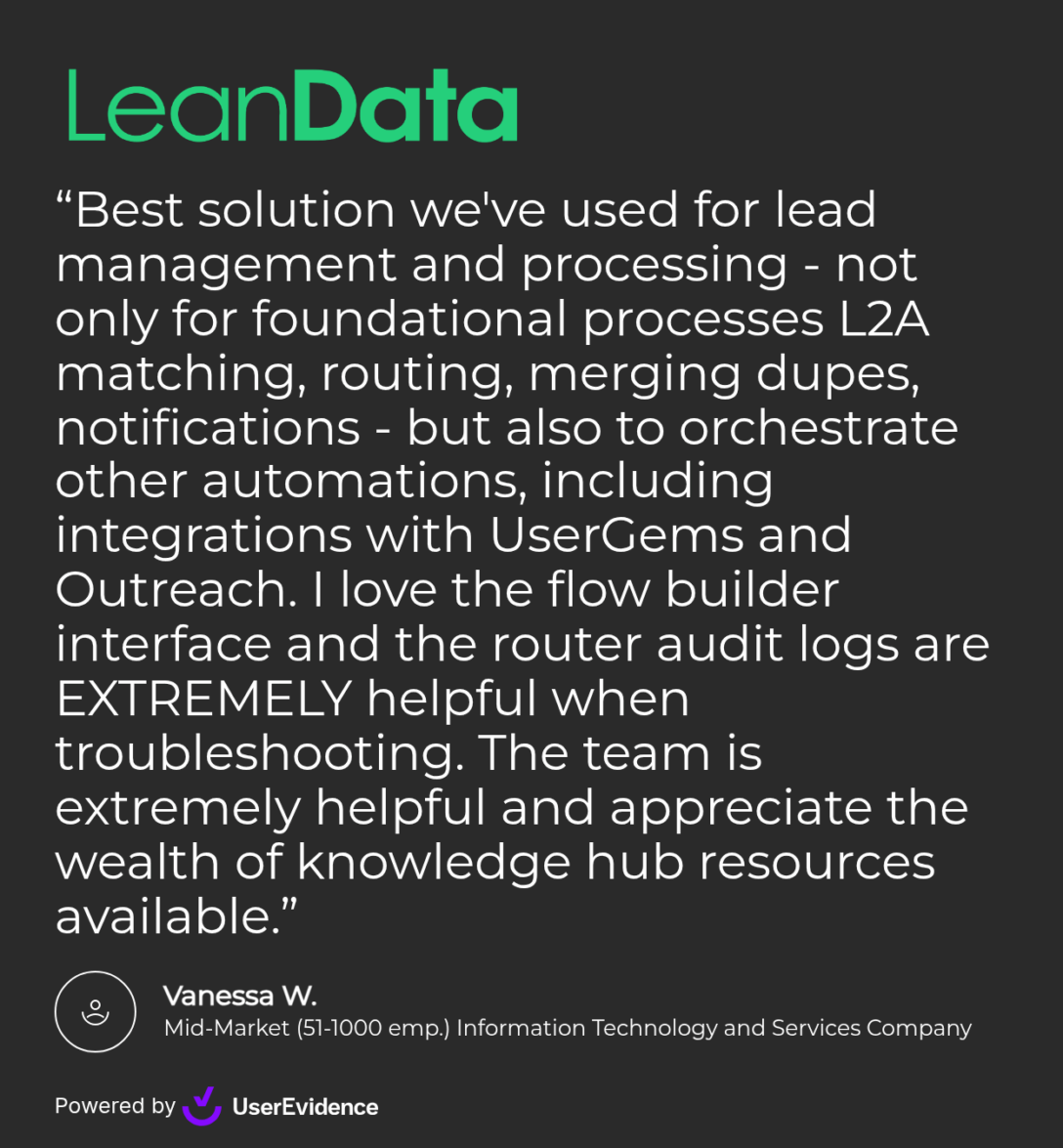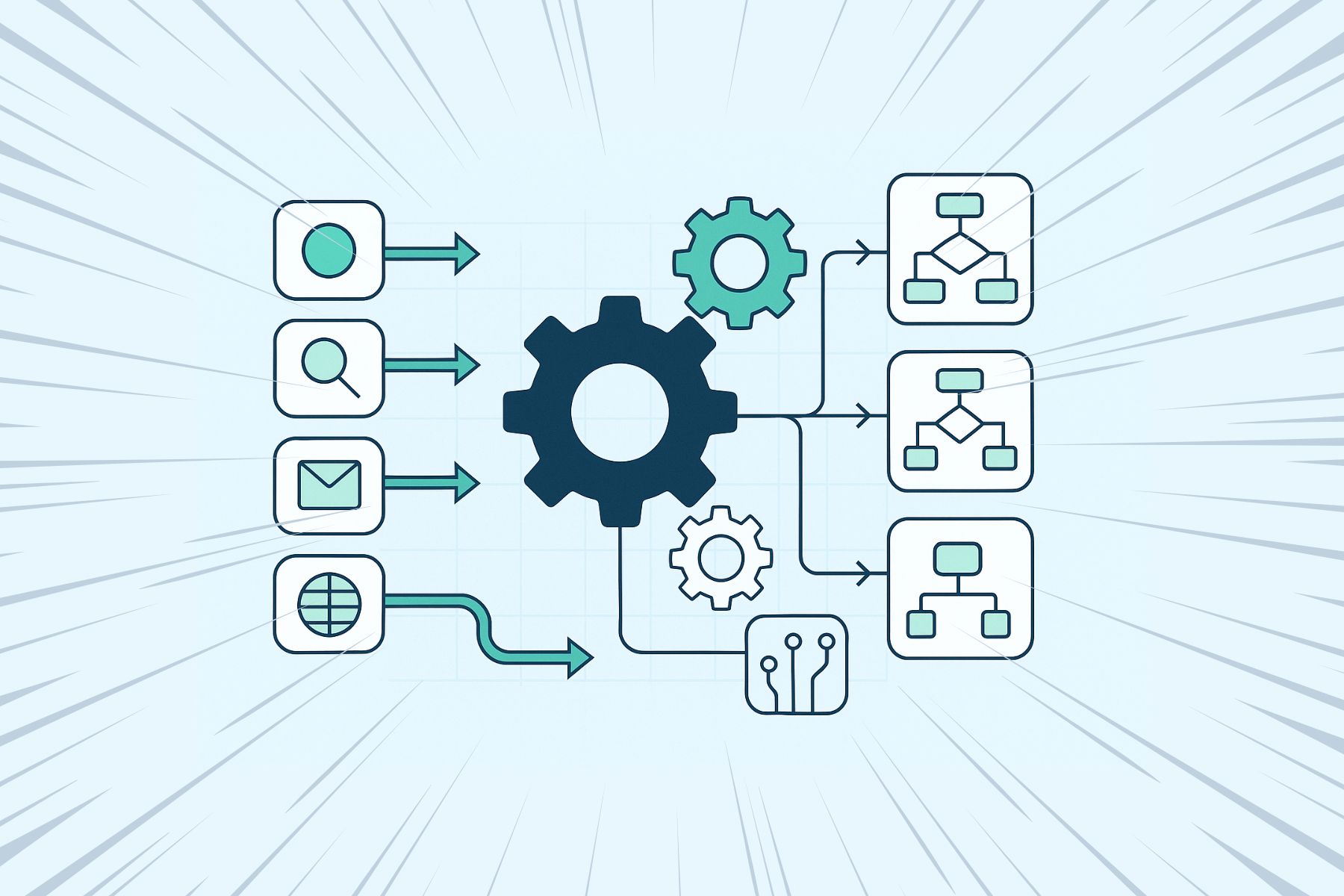Summary
Lead assignment tools help automate early lead distribution, but they can’t keep up with today’s complex B2B buying journeys. This article explains why enterprise revenue teams need more than lead assignment tools to achieve true GTM orchestration and alignment.
What You’ll Learn
- Why lead assignment tools fall short in modern B2B sales processes
- How GTM orchestration connects signals, workflows, and insights across teams
- When revenue teams should move beyond lead routing to full orchestration
- What data visibility and SLA tracking reveal about GTM performance
- How LeanData enables alignment, speed, and scale beyond lead assignment
Most revenue teams outgrow lead assignment tools faster than they expect.
At first, these tools help automate basic lead distribution, saving time and eliminating spreadsheets. But as organizations grow and GTM motions become more complex, the limits of these tools start to show.
B2B go-to-market leaders — from RevOps and Marketing Ops to Sales Development Directors and CMOs — know that managing buyer journeys today requires more than just getting leads into the right hands.
It requires orchestration across the entire revenue process.
The Limits of Lead Assignment Tools
Lead assignment tools serve an important purpose, especially for organizations that are just starting to automate processes. They can:
- Reduce manual triage and tasks
- Improve speed to lead for inbound requests
- Balance workloads with round robins or territory models
- Provide basic audit trails for assignments
These capabilities help at the beginning. Yet as buying cycles involve more stakeholders and more signals, simple tools fall short.
Common challenges include:
- Limited visibility into the full buyer journey
- Difficulty connecting assignments to outcomes like pipeline or revenue
- Siloed workflows that operate only within sales, not across GTM teams
- Heavy reliance on admins or developers to adapt to business changes
As a result, what starts as a helpful automation often becomes a bottleneck for scale.
From Lead Assignment to GTM Orchestration
First, consider what today’s revenue leaders are being asked to deliver.
They need to align marketing, sales, and customer success around the buyer journey. Then, they need to adapt to signals across multiple systems, not just leads from a webform. Plus, they must track and improve efficiency across every stage of the lifecycle.
This is where GTM orchestration comes in.
Instead of focusing only on assigning leads, orchestration connects data, signals, workflows, and insights across the entire revenue process. It ensures every buyer interaction, whether inbound, outbound, or post-sale, is routed, tracked, and optimized in one connected environment.

How LeanData Expands Beyond Lead Assignment
LeanData began with industry-leading lead-to-account matching and routing. Over time, B2B teams needed more. Consequently, the platform evolved into an Intelligent GTM Orchestration solution.
Here’s how it helps teams go beyond lead assignment tools:
- Data integration: Pulls together GTM data across systems and normalizes it for accuracy.
- Signal-based workflows: Triggers actions not just on new leads, but on changes across opportunities, accounts, and buying groups.
- Agility: No-code workflow design lets teams adjust territory models, SLAs, and processes without waiting on IT.
- Journey visibility: Provides shared awareness of buyer signals and progress across marketing, sales, and service.
- Scheduling: Tools like BookIt allow buyers to instantly book time with the right person, removing friction.
As a result, teams can respond to buyer signals with precision while keeping every GTM motion aligned.
Why Orchestration Matters for GTM Leaders

Enterprise leaders cannot afford fragmented tools. CFOs expect efficient growth. CMOs and CROs expect alignment. Revenue operations leaders expect workflows they can adapt as strategy changes.
By moving beyond lead assignment tools, organizations gain:
- Alignment across GTM teams
- Visibility into the full buyer journey
- Confidence in data accuracy
- Speed to lead without bottlenecks
- Flexibility to change motions as markets shift
This isn’t about replacing one tool with another. It’s about creating a connected foundation that keeps the revenue engine running smoothly, no matter how buying behavior evolves.
Moving Forward
If you’re serious about growth, the days of relying solely on lead assignment tools are over. These tools may help in the early stages, but they are not built for the scale and complexity of today’s buyer journey.
Modern revenue teams need orchestration: a platform that integrates signals, automates responses, and provides visibility across the lifecycle.
Companies that make this shift first not only reduce friction but also build a GTM foundation that grows with them.












